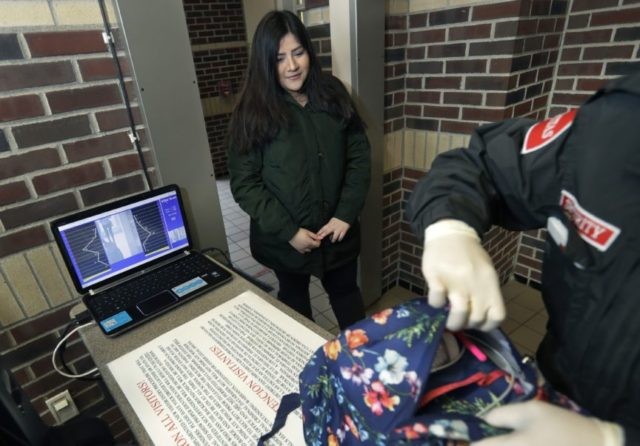The United States Capitol Building often is referred to as “The People’s House.” For more than two centuries, access to the People’s House was largely unfettered.
Visitors, whether American citizens or otherwise, could easily and freely walk into the building to see their Representative, listen to a congressional hearing, roam the statue- and art-bedecked corridors, or sit in the visitors galleries to watch one of the two legislative bodies in action.
All that changed dramatically after July 24, 1998, the day a deranged gunman charged into the House entrance and mortally wounded two Capitol Hill police officers. That double murder set in motion an assessment of just how open to the people the People’s House should remain. Over the next several years, a massive and costly construction project took place that now funnels all non-official visitors to the Capitol through a huge, underground system of checkpoints and stairways before they can enter the building.
Security measures on the Hill were tightened further following the terror attacks of September 11, 2001. In similar fashion, it has now become far more difficult for visitors to gain access to public areas of the White House that once were within easy reach for citizens eager to do what people in other countries could only dream about – walking into the actual home of their country’s leader.
These changes serve as very real, if unfortunate reminders of the 21st Century world in which we live; among other things, lengthening the distance between the people and their government. The same can be said with regard to America’s schools.
Where once a parent could walk unquestioned into an elementary school to share lunch with their son or daughter; now they must be buzzed in, badged, possibly directed through a metal detector, and permitted to go only to a specific place within the building.
Yet even with all these security measures, tragedies such as befell the high school in Santa Fe, Texas on May 18th, still occur.
As with the debate about whether to place armed and uniformed law enforcement officers at schools, there remains much controversy surrounding the question of “how much security at a school is too much?”
Sociologists ponder whether physical security measures like metal detectors “alienates” students and makes them less receptive to learning. One writer at the RAND Corporation, Rajeev Ramchand, cites to a study that concludes, counterintuitively, that visible physical security measures makes students feel less safe. Some analysts fret that placing physical security measures at schools make the institutions appear unwelcoming.
In the end, one can become dizzy going ‘round in circles about whether to install physical security devices at school and to what extent. In many respects, this is the debate that virtually every country has faced since 9-11 regarding security at airports and other government structures.
Fears that tightened security at commercial airports would lead to a downturn in civilian air travel, however, never materialized. Despite the animosity with which passengers occasionally view TSA security checkpoints or personnel, the public’s appetite for air travel remains at historically high levels. And, despite the increased security measures at the U.S. Capitol, it remains one of the most visited tourist sites in the country.
But there are differences that must be considered. Schools are not tourist attractions; and unlike most air travel, attendance is not a voluntary activity. It is appropriate and important to consider the effects on students, teachers, and parents of enhanced security measures at schools.
The strategy underlying virtually every plan for physical security measures at schools is quite simple: minimize the opportunity for a potential murderer to gain access to the school in the first instance, and maximize the chances his efforts will be quickly thwarted if he does gain entry.
Unlike airport security, however, school security measures need to be considered in the broader context of whether they negatively impact what goes on there; in other words, whether they enhance or diminish the ability of teachers to teach and students to learn. And, unlike commercial airports, a one-size-fits-all approach is not appropriate for the thousands of extremely diverse schools scattered across communities from Miami to Anchorage.
Striking that balance is not easy, and dollars often are in short supply; but there are resources available. Organizations such as “PASS” (the Partnership Alliance for Safer Schools), along with law enforcement organizations in all parts of the country and at all levels, are ready to assist school boards in developing, implementing and updating hardened security measures. But the will to do so has to be there.
Any school board’s failure to engage such steps for whatever reason, including political or bureaucratic concerns, should be cause for parents to demand those who failed in this regard be fired or removed from office.
Bob Barr is president and CEO of the Law Enforcement Education Foundation (LEEF). From 1995-2003, he represented Georgia’s Seventh Congressional District in the U.S. House of Representatives.

COMMENTS
Please let us know if you're having issues with commenting.